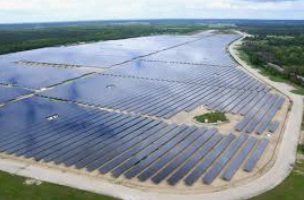Can a supercapacitor
be prepared from waste or from something which is almost free? Seems amazing or
unbelievable. Well, Indian scientists have developed a technology to make a
simple, low-cost environmentally friendly and sustainable supercapacitor electrode
derived from industrial waste cotton, and an electrolyte for a Supercapacitor derived from seawater.
Both these products electrodes and electrolyte for a supercapacitor is not
only environmentally friendly and cost-effective, but also a scalable, and
alternative aqueous electrolyte, which may replace the existing aqueous-based
electrolytes for the economic fabrication of supercapacitor, claim the scientists of the International Advanced Research Centre for Powder Metallurgy and New Materials (ARCI), an autonomous organization of the Department of Science and Technology, Govt. of India, which had invented these two costly components from waste.
Supercapacitor:
A supercapacitor (SC),
also called an ultracapacitor with a capacitance value much higher than
other capacitors, but with lower voltage limits, that bridges the gap between
electrolytic capacitors and rechargeable batteries. It typically stores 10 to
100 times more energy per unit volume or mass than electrolytic capacitors, can
accept and deliver charge much faster than batteries, and tolerates many more
charges and discharge cycles than rechargeable batteries.
It is
a next-generation energy storage device that has received extensive research
attention owing to advantages such as high power density, long durability, and
ultrafast charging characteristic as compared to conventional capacitors and
lithium-ion batteries (LIB).
Its Usage:
Supercapacitors are used in applications requiring many
rapid charge/discharge cycles, rather than long term compact energy
storage — in automobiles, buses, trains, cranes and elevators, where they
are used for regenerative braking, short-term energy storage, or burst-mode
power delivery, smaller units can be used as a power backup for static random
access memory (SRAM).
The Invention:
Scientists from ARCI, an autonomous organization of the Department of Science and
Technology, Govt. of India, has developed these two low-cost, environmentally
friendly, and sustainable supercapacitor electrode derived from industrial
waste cotton and electrolyte from natural seawater which may replace the
existing aqueous-based electrolytes for the economic fabrication of
supercapacitor.
A supercapacitor
has four components (1) electrode, (2) electrolyte, (3) separator, and the (4) current
collector. The first two, electrode and electrolyte, developed by the
scientists of ARCI, are the pivotal components. And it directly determines the
electrochemical behaviour of the supercapacitors and is considered to be very
costly components.
The fabrication
cost of electrode materials, as well as electrolytes, should be reduced because
these two components account for the cost of the device. In search
of a cost-effective material for making affordable supercapacitor devices,
scientists at ARCI have converted industrial waste cotton (Trash) into highly porous carbon
fibers (Treasure) by
activation process and then utilised the porous carbon fibers to make
high-performance supercapacitor electrodes.
In the recent
research published in Energy Technology,
scientists at ARCI demonstrated the feasibility of using seawater as natural
electrolyte for the fabrication of aqueous-based supercapacitor devices which
shows great potential for practical implementation. The study found that
natural seawater-based supercapacitor exhibited maximum capacitances at a
current density of 1 Ag-1. In
addition, seawater-based supercapacitor shows very good durability upon 10,000
charge-discharge cycles with 99 % of capacitance retention and 99 % of
Coulombic efficiency (efficiency with
which charge is transferred in a system facilitating an electrochemical
reaction).
The
research team’s new, sustainable and green supercapacitor device shows great
potential for practical application, and perhaps most importantly, the integrated solar cell with seawater-based
supercapacitor as low cost, eco-friendly, efficient and self-powering device.
The successful
demonstration of the device revealed that solar-powered supercapacitors can not
only store the electrical energy but also overcome the drawbacks of the
intermittent nature of the solar irradiation. Hence, the integrated solar cell
with supercapacitor can be used as an energy harvester storage device due to
their long cycle life and maintenance-free power supply.
“The
large-scale use of renewable energy requires the creation of matching capacity for
inexpensive electrical energy storage. This study provides a solution for the fabrication of super-capacitors from such abundant materials as waste cotton
and seawater! It is an excellent example of the creative science for the
sustainable, green processes embedding principles of waste-to-wealth,” says
Prof Ashutosh Sharma, Secretary, DST.
BY Vijay Thakur, Special Representative, The Statesman, vijaythakurx@gmail.com
Ends.































